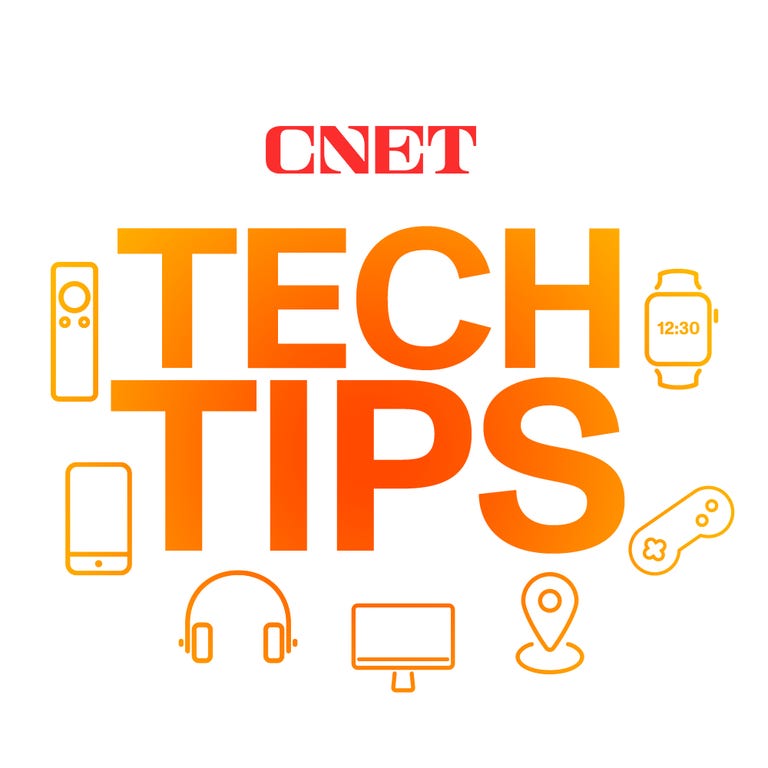Apple’s “Wonderlust” event is set for Sept. 12, and the company’s invitation could be our first “official” clue hinting at the rumored iPhone 15. We’ve been collecting rumors about the gadget for months, but Apple sometimes drops an early hint about its September event into the invite. This doesn’t always mean there are true connections between what’s said and shown in the invitation and what actually emerges at the show, but the invite creates a jumping off point for discussing what we think Apple might spotlight.
See also
Examining Apple’s ‘Wonderlust’ invite
Let’s start by thinking about the name: Wonderlust. With this tweak of “wanderlust,” Apple appears to be invoking a travel theme. And it’s no stretch to say phones are essential travel companions: We use them for photography, GPS, looking up where we want to eat — there are endless possible features that could be developed with just travel in mind.
Moving onto the invitation’s design, we get a disintegrating graphic that shows a blue-and-sand-colored Apple logo being blown apart by an invisible force — perhaps the wind? Or perhaps the pieces of the Apple logo are being pulled together via a magnetic attraction? Either way, an atmospheric element might be what we could extrapolate from this design choice, and phones by their very nature are wireless devices that create constant connections through the atmosphere.
(It’s also true that blue and gray have been iPhone colors in the past, and maybe this logo’s colors provide an early look at what a few of the iPhone 15 models might look like.)
I should reiterate that these thoughts are speculation, but they’re enough to warrant a closer look at how Apple could improve the iPhone 15. The following things all tie into the themes of travel and atmosphere, but they’re also areas in which Apple could demonstrate improvement where rival phones have already staked out territory, or they’re realms closely related to iOS 17 features we already learned about at Apple’s WWDC event.
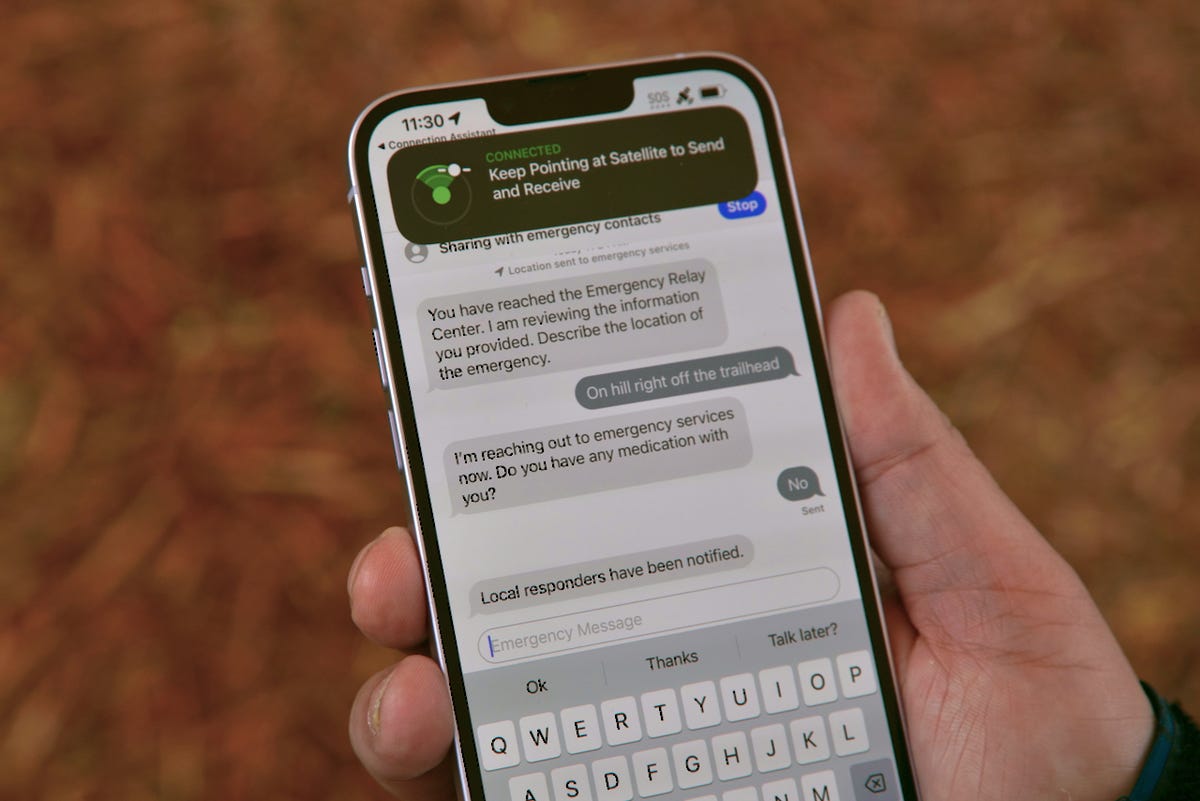
Even more satellite communication
Tying into both travel and the atmosphere, Apple could make new announcements related to the satellite connectivity features first launched with the iPhone 14 line. Right now Apple’s efforts are focused on its Emergency SOS feature, which lets people with a clear view of the sky use the iPhone to text emergency services where cellular service isn’t available. The iPhone 14 line comes with two years of free emergency satellite service.
Though Apple kicked off bringing satellite service to phones, it won’t be alone for long. Qualcomm, Samsung and other companies have announced plans to bring their own spin to satellite connectivity, including voicing their intention to allow for nonemergency communication over those airwaves.
On this year’s stage, Apple could announce new improvements to its satellite connectivity features, perhaps allowing for an iMessage service while in the wilderness, or limited voice calls.
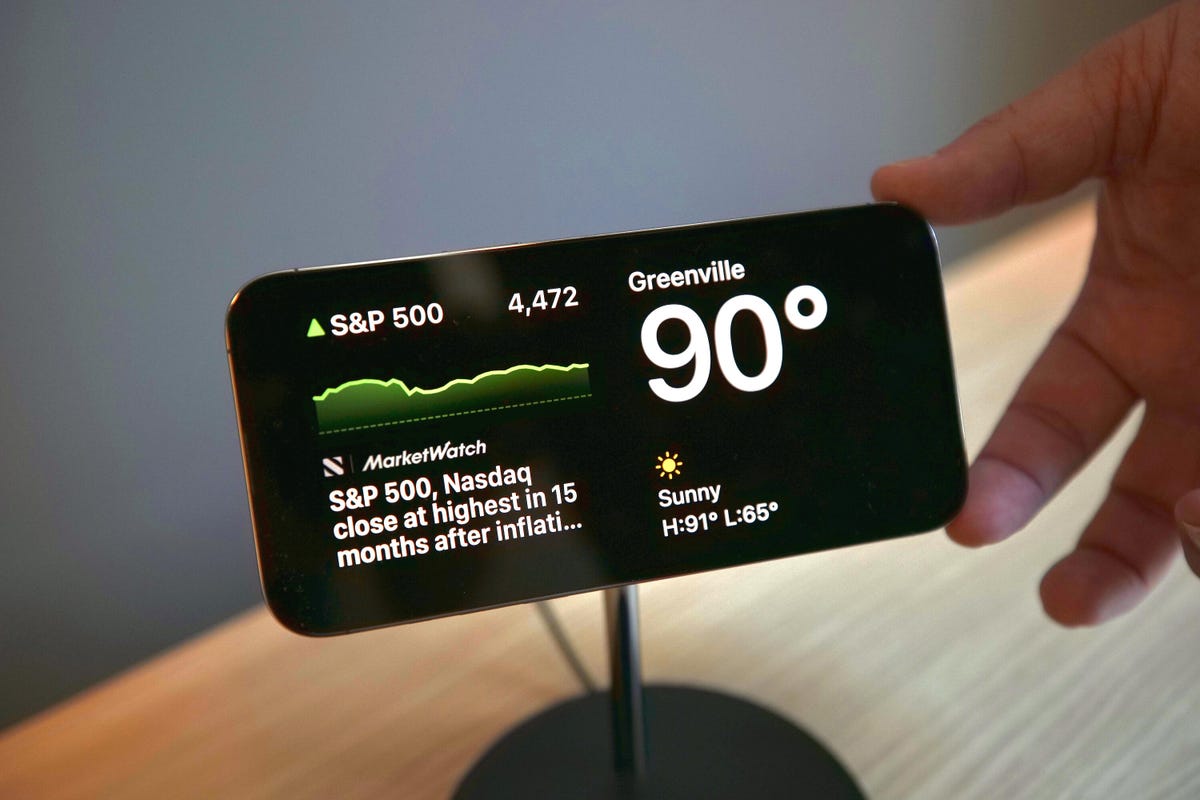
Faster wireless charging and more MagSafe
Apple’s MagSafe made a splash when it debuted alongside the iPhone 12 in 2020, very literally snapping separate objects together for enhanced wireless charging and stackable accessories. The particle effect in our Apple event invitation — whether it means the logo is being pulled together or apart — could indicate MagSafe as well as the wireless charging feature that MagSafe supports.
And if so, it’s about time. Apple has room to improve the iPhone’s wireless charging speeds, especially when compared with those of rival flagship Android phones. Currently, Apple supports 7.5-watt wireless charging speeds with a regular Qi wireless charger, and 15W speeds with an officially certified MagSafe charger. Meanwhile, Google’s Pixel 7 can wirelessly charge at 12W on a Qi charger with an extended power profile, and that bumps up to 20W when using Google’s Pixel Stand that has a built-in fan. Previous OnePlus phones can get 15W charging from Qi wireless chargers with an extended power profile, and a ludicrously fast 50W on their official stand, thanks to the use of a split battery. All this leaves a lot of room for growth for Apple, and matching Google’s speeds, at least, would be a solid step in making wireless charging more useful on the iPhone.
A new Qi2 wireless charging standard is in the works though, and Apple is a member of the Wireless Power Consortium that’s developing it. Whenever that standard is ready, that might lead to faster wireless charging speeds on future iPhone models.
Regardless of charging, there’s likely even more room to grow MagSafe into a modular accessory platform. Maybe Apple could create a MagSafe dock that instantly starts an AirPlay session with a TV. Or create an attachable projector like Motorola once tried with the Moto Z phone line. How about a portable HomePod speaker that snaps right onto your phone, similar to a number of magnetic speakers that already exist on Amazon? There’s still a lot of untapped potential for MagSafe.
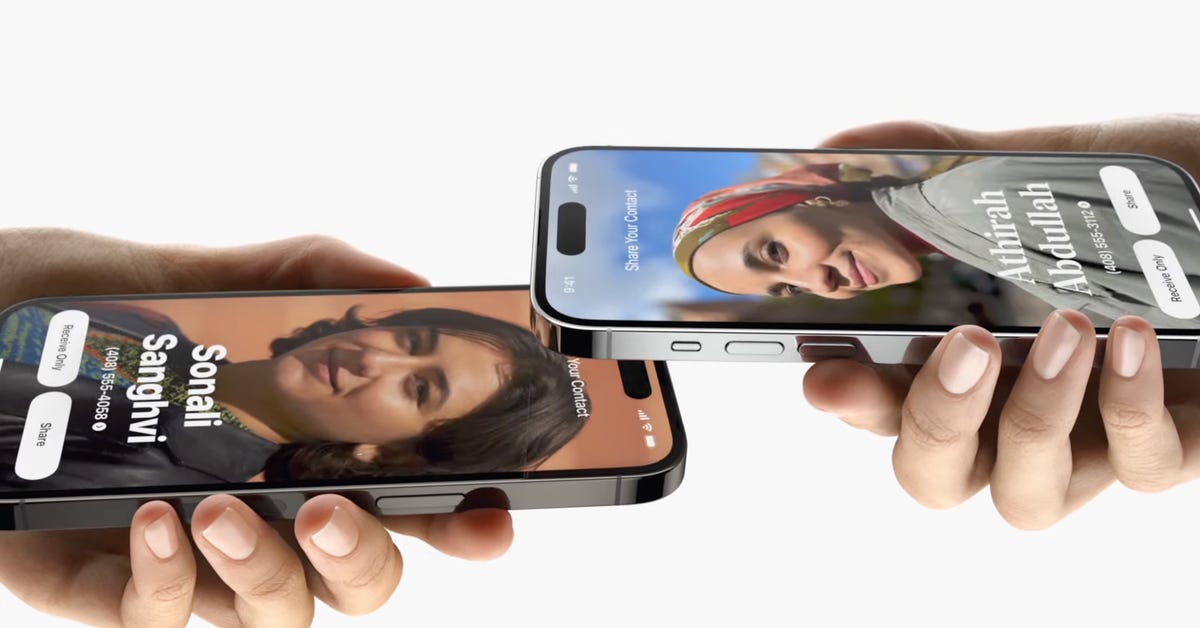
NameDrop and new ways to share in person
Another atmospheric idea starts with an iOS 17 feature we already know: NameDrop. This feature lets you quickly share contact information with someone in person by bringing two iPhones together. But Apple could do so much more with local wireless sharing.
For instance, Apple already allows for sharing iPhone audio between two different sets of AirPods. What if this wireless sharing expanded SharePlay, allowing for simultaneously playing music and video across multiple phones at once — without being on a FaceTime call.
This could be instantly useful if you wanted to share a YouTube video with a friend without having to hand over your phone. Or if you wanted to create a quick surround-sound system by syncing five iPhones together to play music during a dinner party, since your phones are probably sitting on the table anyway.
These all could be natural extensions of other features we already know are on the way. For instance, FaceTime on Apple TV will use its own wireless magic to connect an iPhone’s camera and microphone for video calls. Why not think even bigger and let multiple iPhones share even more media, just by being right next to each other?

Using your camera to scan even more places
Returning to travel, Apple’s Visual Look Up is already capable of identifying landmarks, plants and pets, but you need to move over to the Photos app to take advantage of those features. Perhaps the next iPhone and iOS 17 could speed this, and let you start scanning these items directly from the camera app.
This would bring Visual Look Up into better parity with Google Lens, which quickly identifies items for you without the need to save them into your camera roll. Maybe you could scan a restaurant while you were standing in front of it, and then get its menu. Or scan a friend’s shirt, and then find it on sale to get it yourself. These scenarios are already possible with Google Lens, making this a very noticeable way for Apple to bring more features into its camera app.
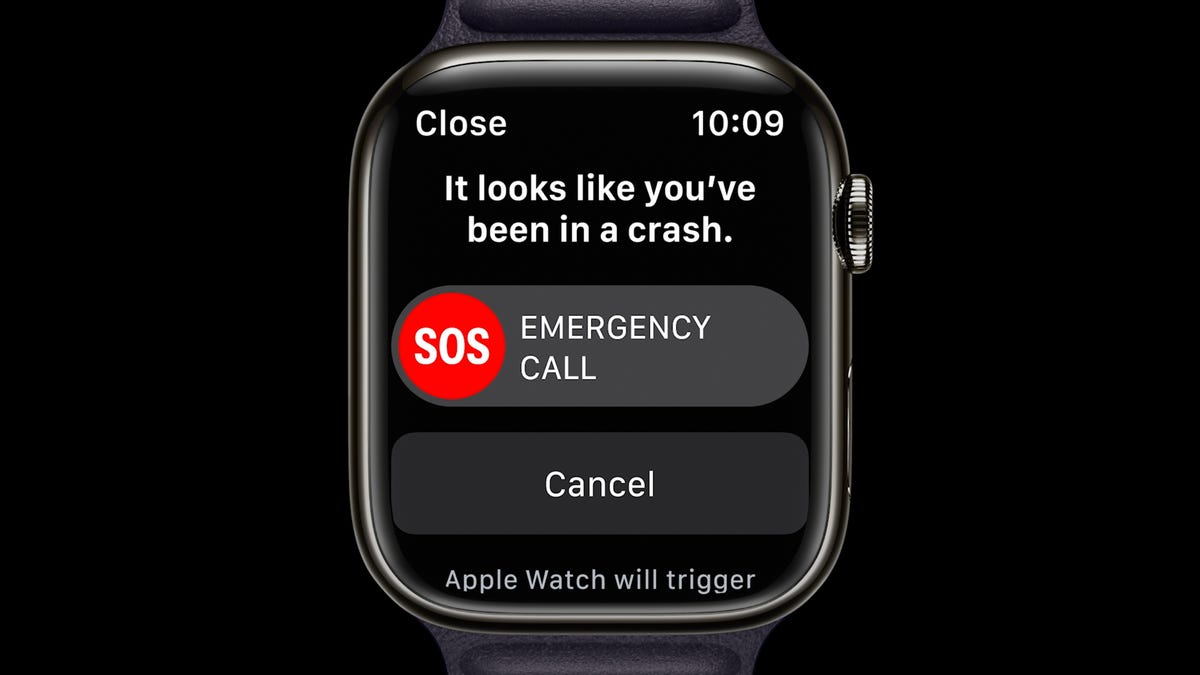
Expanding safety features
When you travel in a vehicle, Apple’s new Crash Detection features could provide an essential lifeline in the event of an accident. As it stands, the feature can automatically contact emergency services should a supported iPhone or Apple Watch detect such an event. But perhaps Apple could augment this further by taking advantage of other sensors within the iPhone or a paired up Apple Watch to activate a heart rate sensor at the same time to provide a quick health check to the wearer.
Or maybe Apple could expand its Crash Detection feature so it shares your physical location with your emergency contacts. This could be similar to Apple’s new Check-In feature, which will proactively send alerts when friends or family make it home safely. And maybe it’s already worthwhile to expand this feature for emergency situations, like being unexpectedly taken to the hospital.
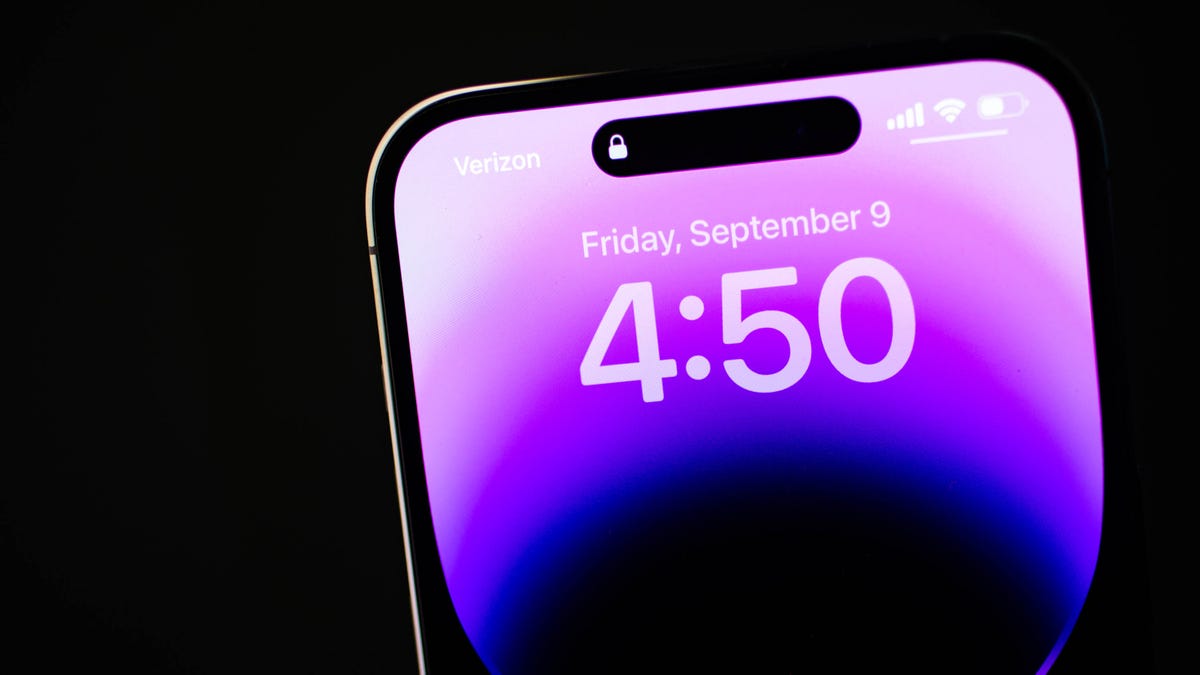
Other iPhone 15 rumors we’re watching
Though we don’t have any solid evidence that the above ideas are coming to the iPhone 15, these are all areas where Apple could improve.
The iPhone 15 rumor mill is a busy one though, and even without an invitation to pore over, we’re monitoring the possibility of a USB-C port arriving to replace Lightning, seeing if the new Dynamic Island will expand to every iPhone model after its debut on the iPhone 14 Pro, and wondering whether the iPhone 15 Pro will move toward solid-state volume and power buttons.
Whatever’s ultimately on the way to Apple’s iPhone 15, we’ll likely find out for sure when Apple’s event begins on Sept. 12.
